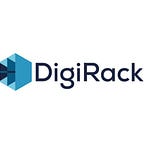DigiRack Auction: Utilising the English Auction Method
As a growing number of the world’s wealthiest search for safe havens to store their fortune, many are turning to “investments of passion” including famous works of art, rare collectibles etc. Early in the year, the sale of Edvard Munch’s “The Scream” for $120 million broke the record for the most expensive painting ever sold at auction.
More than a decade ago, the super-rich spent more than an estimated $11 billion on art. However, wherever money is being invested, there lies a huge opportunity for innovation, which if well utilised will translate to even greater turnover.
Non-fungible tokens (NFTs) are the latest trend to have stirred a buzz in the world of art. Whether you understand, like or hate it, the concept proves that digital ownership has real and significant demand and many are willing to pay a huge premium for it. According to Attorney Tal Lifshitz, a Partner and Co-Chair at Kozyak Tropin & Throckmorton (KTT), it is not far-fetched to see why big brands are willing to spend huge money on NFTs because they are trendy, fun, and cutting edge technology that has the potential to redefine the way brands do business and engage with their consumers.
Auctioning NFTs on DigiRack Marketplace
Most people think of auctions as the traditional open-outcry, ascending-bid (or English) public sale because this is the most popular and easily understood method of auction. However, it is only one of many. Fundamentally, an auction is an economic mechanism whose purpose is the allocation of goods and the formation of prices for those goods via a process known as bidding.
Depending on the digital properties of the bidders and the nature of the items to be auctioned, various auction methods may be either more efficient or more profitable to the seller than others may. Like all well-designed economic mechanisms, the designer assumes that individuals will act strategically and may hold private information relevant to the decision at hand. At DigiRack, we have carefully structured auction to encourage bidders to reveal valuations, discourage cheating or collusion and maximize revenues.
William Vickrey established the taxonomy of auctions based on the order in which the auctioneer quotes prices and the bidders tender their bids. He established four major (one-sided) auction types:
· Ascending-bid (open, oral, or English) auction;
· Descending-bid (Dutch) auction;
· First-price, sealed-bid auction; and
· Second-price, sealed-bid (Vickrey) auction.
Why English Auction?
The most common type of auction, the English auction, is mostly used to sell art, wine, antiques, and other goods. In it, the auctioneer opens the bidding at a reserve price (which may be zero or a certain amount strategically selected by the seller to gas up the value of the NFT) which is the lowest price he is willing to accept for the item. Once a bidder has announced interest at that price, the auctioneer solicits further bids usually raising the price by a predetermined bid increment, which could be for example 1000 RACK/100 ADA, or 500 RACK/50 ADA increment per bid. This continues until no one is willing to increase the bid any further, at which point the auction is closed and the final bidder receives the item at his bid price. Because the winner pays his bid, this type of auction is called the first-price auction. Under this method of auction, DigiRack has also gone further to create certain tools to make the process seamless for both the seller and the collector.
Our Variations
The auction could be a timed auction where the countdown kicks off at the beginning of the sales and people can make bids until the very last second counts. When the bid is closed at the lapse of time and the seller’s reserve price is not met, an offer of the seller’s reserve price appears on the highest bidder’s negotiation dashboard, which will show the seller’s reserve price with the option for the bidder to either accept, reject or increase the last bid. It is at the discretion of the seller to accept or reject an increased offer from the bidder. Where the seller rejects this, the NFT will go back into the market. In the event the seller accepts the amended offer, the auction ends with the NFT been awarded to the highest bidder. Generally, this auction method is more efficient and more profitable to the seller than others are.
Distinctions between the English and the Dutch Auctions Examined
In the English auction, the bid starts from a lower value and reaches its highest value. In contrast, in a Dutch auction, the bidding starts from the highest value and reaches a lower value although not less than the minimum amount set. One can bid from minimum to maximum in English bidding, whereas in Dutch bidding, one can bid from maximum to minimum.
The highest price is not set in an English auction, whereas the Dutch auction sets the highest price. Examining the differences between the two, the DigiRack team chose to implement the English auction for a number of reasons that are mostly beneficial to the sellers on our platform. The concept of English auction drives the price of NFTs upwards and many times create the fear of missing out especially towards the end of the time countdown. You will mostly find collectors stepping on each other just to own a certain collection. This drives the bidding price up. The concept of English auction also helps to create a linear trajectory movement of the price of NFTs, which brings better returns.
In conclusion, the concept of setting a starting price also helps to ward off bidders who may end up giving a low value to a particular NFT. By setting a starting price, the seller has more or less set a standard for pricing the collections, which means whoever bids, has to meet that standard or surpass it.
Official Project Links
